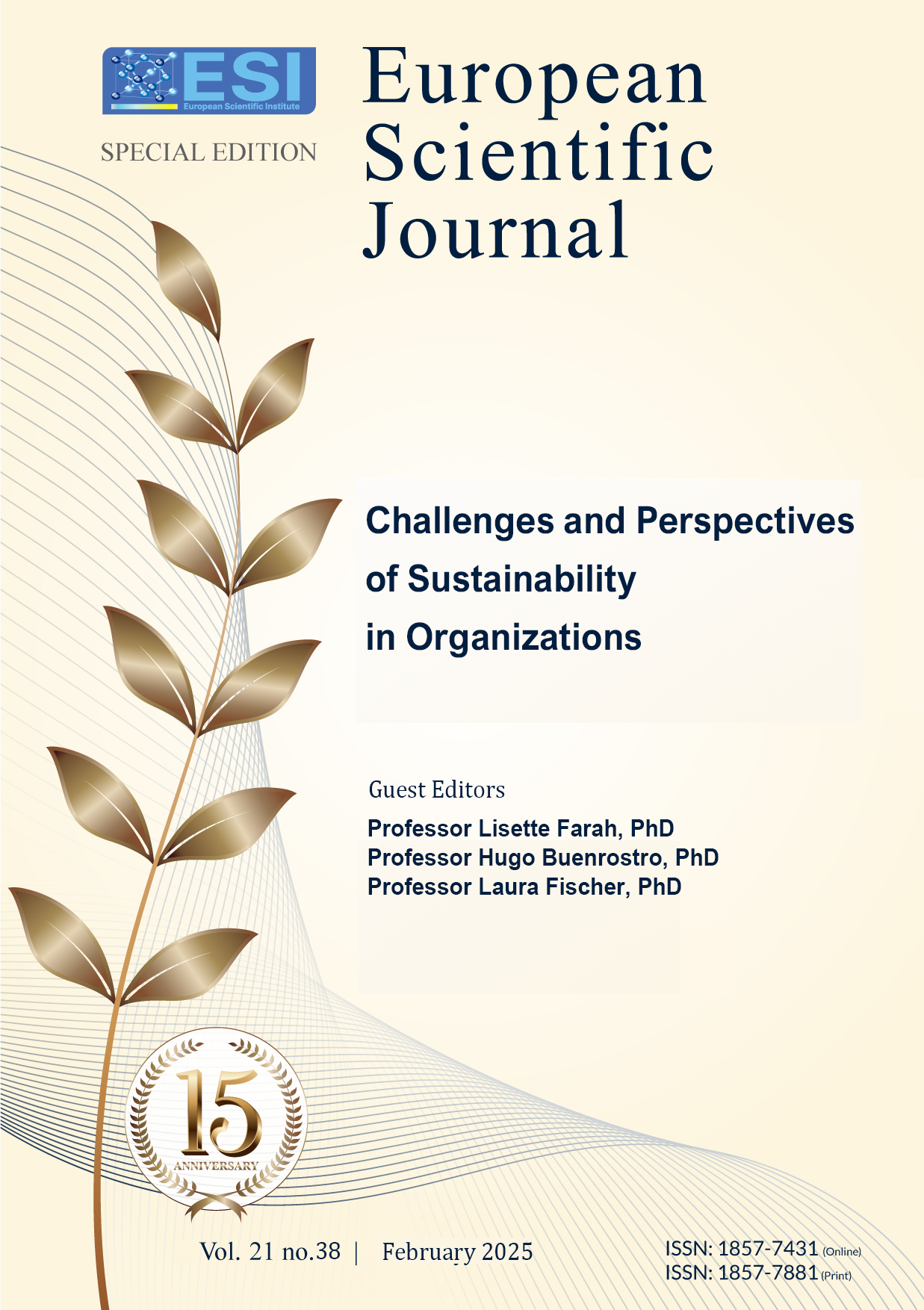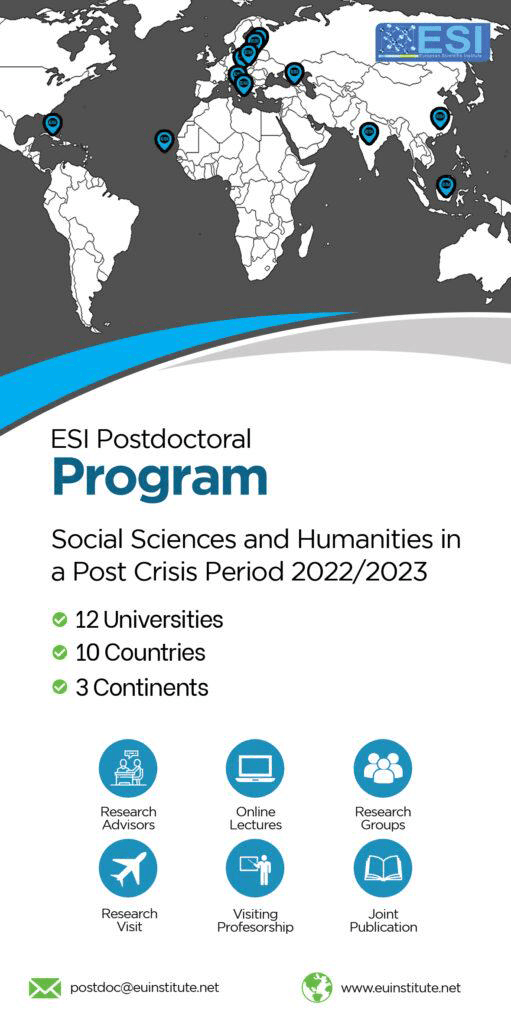Innovación tecnológica y sustentabilidad: Una revisión sistemática de la literatura desde una perspectiva de bibliometría
Abstract
El artículo científico realiza una revisión sistemática de la literatura sobre innovación tecnológica y sustentabilidad utilizando un enfoque bibliométrico. A través del análisis de 2863 artículos científicos extraídos de la base de datos Web of Science, se examinan las tendencias, enfoques metodológicos, áreas temáticas, autores más influyentes y vacíos en la literatura. Los resultados revelan un crecimiento exponencial en la producción científica en los últimos años, con un enfoque creciente en la integración de la innovación tecnológica para promover la sustentabilidad. Las palabras clave más frecuentes en estos estudios incluyen innovación, sustentabilidad, tecnología y gestión. El análisis bibliométrico permitió identificar tres áreas temáticas principales: la innovación, el marco conceptual y las dinámicas de transición. Estos resultados sugieren la importancia de políticas y estrategias que promuevan la innovación sostenible, subrayando la necesidad de una investigación continua en este campo para apoyar el desarrollo de soluciones tecnológicas que integren aspectos sociales y ambientales. Además, se destaca la complejidad en la cuantificación del valor social y ambiental de estas innovaciones, el cual se manifiesta con el tiempo, lo que añade un desafío adicional para la investigación y la implementación de políticas efectivas.
The scientific article performs a systematic review of the literature on technological innovation and sustainability using a bibliometric approach. Through the analysis of 2863 scientific articles extracted from the Web of Science database, the trends, methodological approaches, thematic areas, most influential authors, and gaps in the literature are examined. The results reveal an exponential growth in scientific production in recent years, with an increasing focus on the integration of technological innovation to promote sustainability. The most frequent keywords in these studies include innovation, sustainability, technology, and management. The bibliometric analysis allowed us to identify three main thematic areas: innovation, conceptual framework, and transition dynamics. These results suggest the importance of policies and strategies that promote sustainable innovation, underlining the need for continued research in this field to support the development of technological solutions that integrate social and environmental aspects. In addition, the complexity in quantifying the social and environmental value of these innovations is highlighted, which manifests itself over time, adding an additional challenge to research and the implementation of effective policies.
Downloads
Metrics
PlumX Statistics
References
2. Aguado-Cortés, C., & Castaño, V. M. (2020). Translational knowledge map of COVID-19. arXiv preprint arXiv:2003.10434.
3. Alvarado, R. U. (2016). El crecimiento de la literatura sobre la ley de Bradford. Investigación Bibliotecológica: archivonomía, bibliotecología e información, 30(68), 51-72.
4. Aparicio, J., Villavicencio, C., Peña-Vinces, J., & de la Hoz, G. (2022). Sustainable development and innovation: Systematic review of the last 25 years. Sustainability, 14(13), 7890. https://doi.org/10.3390/su14137890
5. Aria, M., & Cuccurullo, C. (2017). Bibliometrix: An R-tool for comprehensive science mapping analysis. Journal of Informetrics, 11(4), 959-975.
6. Barney, J. B. (2018). Resource-based theory: Creating and sustaining competitive advantage. Oxford University Press.
7. Bocken, N. M. P., Short, S. W., Rana, P., & Evans, S. (2014). A literature and practice review to develop sustainable business model archetypes. Journal of Cleaner Production, 65, 42-56. https://doi.org/10.1016/j.jclepro.2013.11.039
8. Brundtland, G. H. (1987). Our Common Future: Report of the World Commission on Environment and Development. Oxford University Press.
9. Cagno, E., & Trianni, A. (2014). Evaluating the barriers to specific industrial energy efficiency measures: an exploratory study in small and medium-sized enterprises. Journal of cleaner Production, 82, 70-83.
10. Cobo, M. J., López-Herrera, A. G., Herrera-Viedma, E., & Herrera, F. (2011). An approach for detecting, quantifying, and visualizing the evolution of a research field: A practical application to the Fuzzy Sets Theory field. Journal of informetrics, 5(1), 146-166.
11. Cobo, M. J., López-Herrera, A. G., Herrera-Viedma, E., & Herrera, F. (2011). An approach for detecting, quantifying, and visualizing the evolution of a research field: A practical application to the fuzzy sets theory field. Journal of Informetrics, 5(1), 146-166. https://doi.org/10.1016/j.joi.2010.10.002
12. Crossan, M. M., & Apaydin, M. (2010). A multi-dimensional framework of organizational innovation: A systematic review of the literature. Journal of Management Studies, 47(6), 1154-1191. https://doi.org/10.1111/j.1467-6486.2009.00880.x
13. De Sousa Jabbour, A. B. L., de Oliveira, J. H. C., & Jabbour, C. J. C. (2018). Unlocking the circular economy through new business models based on large-scale data: An integrative framework and research agenda. Technological Forecasting and Social Change, 144, 546-554. https://doi.org/10.1016/j.techfore.2017.09.010
14. Díaz-García, C., González-Moreno, Á., & Sáez-Martínez, F. J. (2015). Eco-innovation: Insights from a literature review. Innovation, 17(1), 6-23. https://doi.org/10.1080/14479338.2015.1011060
15. Elkington, J. (1997). Cannibals with Forks: The Triple Bottom Line of 21st Century Business. Capstone.
16. Shah, R. (2013). What a fine mess! Moving beyond simple puzzle-solving for sustainable development. The Triple Bottom Line, 89-98.
17. Freeman, C., & Soete, L. (1997). The Economics of Industrial Innovation. MIT Press.
18. Fuentes, J. L., García, M., & Ruiz, A. (2020). Metodología para el análisis bibliométrico en la investigación académica. Journal of Documentation, 76(2), 321-345.
19. Gaziulusoy, A. I., & Brezet, H. (2015). Design for system innovations and transitions: A conceptual framework integrating insights from sustainability science and theories of system innovations and transitions. Journal of Cleaner Production, 108, 558-568. https://doi.org/10.1016/j.jclepro.2015.06.066
20. Geels, F. W. (2010). Ontologies, socio-technical transitions (to sustainability), and the multi-level perspective. Research Policy, 39(4), 495-510. https://doi.org/10.1016/j.respol.2010.01.022
21. Geels, F. W. (2019). Socio-technical transitions to sustainability: A review of criticisms and elaborations of the Multi-Level Perspective. Current Opinion in Environmental Sustainability, 39, 187-201. https://doi.org/10.1016/j.cosust.2019.06.009
22. Geissdoerfer, M., Savaget, P., Bocken, N. M. P., & Hultink, E. J. (2017). The Circular Economy – A new sustainability paradigm? Journal of Cleaner Production, 143, 757-768. https://doi.org/10.1016/j.jclepro.2016.12.048
23. Ghisellini, P., Cialani, C., & Ulgiati, S. (2016). A review on circular economy: The expected transition to a balanced interplay of environmental and economic systems. Journal of Cleaner Production, 114, 11-32. https://doi.org/10.1016/j.jclepro.2015.09.007
24. Hall, J. K. (2001). Environmental supply chain dynamics. Journal of Cleaner Production, 9(2), 119-133. https://doi.org/10.1016/S0959-6526(00)00038-3
25. Hart, S. L., & Milstein, M. B. (2003). Creating Sustainable Value. Academy of Management Executive, 17(2), 56-69.
26. Hoppmann, J., Peters, M., Schneider, M., & Hoffmann, V. H. (2014). The two faces of market support: How deployment policies affect technological exploration and exploitation in the solar photovoltaic industry. Research Policy, 43(3), 524-541. https://doi.org/10.1016/j.respol.2013.12.002
27. ISO. (2006). ISO 14040: 2006. Environmental management—Life cycle assessment—Principles and framework. International Organization for Standardization. Geneva.
28. Kemp, R., & Pearson, P. (2007). Final report MEI project about measuring eco-innovation. UM Merit, Maastricht, 10(2), 1-120.
29. Klewitz, J., & Hansen, E. G. (2014). Sustainability-oriented innovation of SMEs: a systematic review. Journal of cleaner production, 65, 57-75.
30. Lang-Koetz, C., Beucker, S., & Heubach, D. (2008). Estimating environmental impact in the early stages of the product innovation process. Environmental Management Accounting for Cleaner Production, 49-64.
31. Liang, L., & Liu, M. (2018). Understanding the structure of knowledge in innovation and sustainability: A bibliometric analysis. Scientometrics, 115(3), 1445-1465.
32. Markard, J., Raven, R., & Truffer, B. (2012). Sustainability transitions: An emerging field of research and its prospects. Research Policy, 41(6), 955-967. https://doi.org/10.1016/j.respol.2012.02.013
33. McElroy, M. W., & Van Engelen, J. M. (2012). Corporate sustainability management: The art and science of managing non-financial performance. Routledge.
34. Porter, M. E., & van der Linde, C. (1995). Toward a New Conception of the Environment-Competitiveness Relationship. Journal of Economic Perspectives, 9(4), 97-118.
35. Schaltegger, S., & Wagner, M. (2011). Sustainable entrepreneurship and sustainability innovation: categories and interactions. Business strategy and the environment, 20(4), 222-237.
36. Truffer, B., & Coenen, L. (2012). Environmental innovation and sustainability transitions in regional studies. Regional Studies, 46(1), 1-21. https://doi.org/10.1080/00343404.2012.646164
37. WCED, S. W. S. (1987). World commission on environment and development. Our common future, 17(1), 1-91.
38. Wagner, M., Van Phu, N., Azomahou, T., & Wehrmeyer, W. (2011). The relationship between the environmental and economic performance of firms: An empirical analysis of the European paper industry. Corporate Social Responsibility and Environmental Management, 8(1), 1-12. https://doi.org/10.1002/csr.178
39. Wang, W., & Barabasi, A. (2021). The science of science. Cambridge: Cambridge University Press.
40. Aria, M., & Cuccurullo, C. (2017). Bibliometrix: An R-tool for comprehensive science mapping analysis. Journal of Informetrics, 11(4), 959-975. https://doi.org/10.1016/j.joi.2017.08.007
41. Kuhlman, T., & Farrington, J. (2010). What is sustainability? Sustainability, 2(11), 3436-3448.
42. Schot, J., & Steinmueller, W. E. (2018). Three frames for innovation policy: R&D, systems of innovation and transformative change. Research Policy, 47(9), 1554-1567.
Copyright (c) 2025 Cesar Aguado Cortes, Judas Noé Moctezuma Medina, Joaquín Orduña-Trujillo

This work is licensed under a Creative Commons Attribution 4.0 International License.








